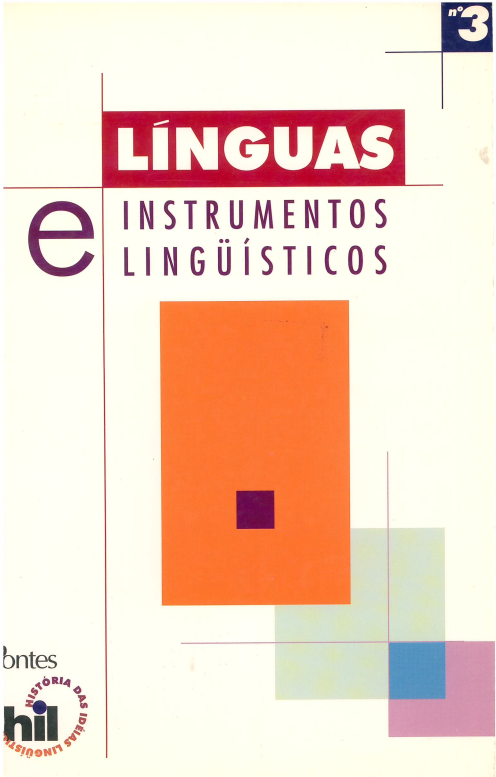Abstract
This essay investigates the textual-interactive event called 'hipertext', taken here as a basis for a review of motions such as those of 'linearization' and 'referentiation'. The hypertext is neither a textual genre nor a mere support for different genres, but a kind of writing. It is a cognitive and referential means of organization constitute a set of structural possibilities which characterize cognitive actions and decisions based on (series of) non-constinuous and non-progressive referentiations. If were into account that linguistic linearity has always constituted a basic principle of (formal or fictional) theoreticalization upon language, we realize that hypertext breaks this pattern at some levels. One does not observe in this kind of writing an order of construction, but possibilities of plurinearized textual construction. The question is: which are the theoretical demands for the construction of hypertext and how has it been serving the purposes of the reader-navigator particularly at school.
References
BEAUGRANDE, Robert de. 1997. New Foundations for Science of Text and Discourse: Cognition, Communication, and the Freedom of Acess no Knowledge and Society, Norwood, N.J., Ablex.
BOLTER, Jay David. 1991. Writing space, The Computer, Hypertext, and the Hystory of writing. Hillsdale, N.J., Lawrence Erlbaum Associates.
CHARTIER, Roger. 1998. A Aventura do Livro. Do Leitor ao Navegador. São Paulo, UNESP.
CRUSE, D. A. 1986. Lexical Semantics. Cambridge, Cambridge University Press.
DEE-LUCAS, Diana. 1986. Effects of Overview Structure on Study Strategies and Text Representations for Instructional Hypertext , In: ROUET et alii (eds). 1996, pp. 73-107.
DILLON, Andrew. 1996. "Myths, Misconcepition, and alternative Perspectives on Information Usage and the Eletronic Medium", In: Rouet et alii (eds). 1996, pp. 25-42.
ESPERET, Eric. 1996. " Notes on Hypertext. Cognition, and Language". In: ROUET (ed) 1996, pp. 109-136.
FOLTZ, Peter W.. 1996. "Comprehension, Coherence, and Strategies in Hypertext and Linear Text", In: ROUET et alii(eds) 1996, pp. 109-136.
GAGGI, Silvio. 1997. From text to hypertext. Decentering the Subject in Fiction, Film, the Visual Arts, and Eletronic Media, Philadelphia/University of Pennsylvania.
GIORA, Rachel. 1985. "Towards a theory of conference". Poetics Today 6:669-716.
GRICE, H. P. 1975, Logic and Conversation. COLE. (ed). Syntax and Semantics. Vol IX: Programatics. Oxford, Oxford University Press.
JOYCE, Michael. 1995. OF Two Minds. Hypertext Pedagogy and Poetics. Ann Arbor. The University of Michigan.
KOCH, Ingedore Villaça & Luia Antonio MARCUSCHI. 1998. " Processos de Referenciação na Produção Discursiva", DELTA, 14, N Especial, pp. 169-190.
LANDOW, George P. 1997. Hypertext 2.0 - The Convergency of Contemporany Critical Theory and Tecnology. Baltimore annd London/ The John Hopkins University Press.
LANDOW, George P. (ed) 1994. Hyper/ Text/ Theory. Baltimore & London, The John Hopkins University Press.
MARCUSCHI, Luiz Antonio. 1998. " Referência e Cognição. O caso da Anafóra sem Antecedente ", Apresentando no Encontro de Linguistica, dezebro de 1998, UFJF, Juiz de Fora mimeo.
NELSON, Theodor Holm. 1992. "Opening Hypertext: A Memoir", In Myrion C. TUMAN (ed) 1992. pp. 43-57.
PERFETTI, Charles A. 1996. " Text and Hypertext", In: ROUET et alii (eds). 1996, pp. 157-161.
REINHART, THANIA. 1981. " Pragmatics and Linguistics: an analysis of sentence topics. " Philosophica 27:53-94.
ROUET, Jean-François: Jarmo J. LEVONEN; Andrew DILLON & Rand J. SPIRO (eds.) 1996. Hypertext and Cognition. Mahwah, N.J., Lawrence Erlbaum.
SAEED, John I. 1997. Semantics. Oxford, Blackwell.
SCHEGLOFF, Emanuel A. 1968. "Sequencing in conversation openings". American Anthropologist. 70 (1968): 1075-1095.
SELFE, Cynthia L. & Susan HILLIGOSS. (eds). 1994. Literacy and Computers. The Complication of Teaching and Learning with Technology. New York, The modern Language Association of America.
SNYDER, Ilana. 1997. Hypertext. The eletronic labyrinth. Washington,New York University Press.
TUMAN, Myron, C. (ed) 1992. Literacy Online. The Promise (and peril) of Reading and Writing with Computers. Pittsburgh & London, University of Pittsburgh Press.

This work is licensed under a Creative Commons Attribution-NonCommercial-ShareAlike 4.0 International License.
Copyright (c) 1999 Línguas e Instrumentos Línguísticos

